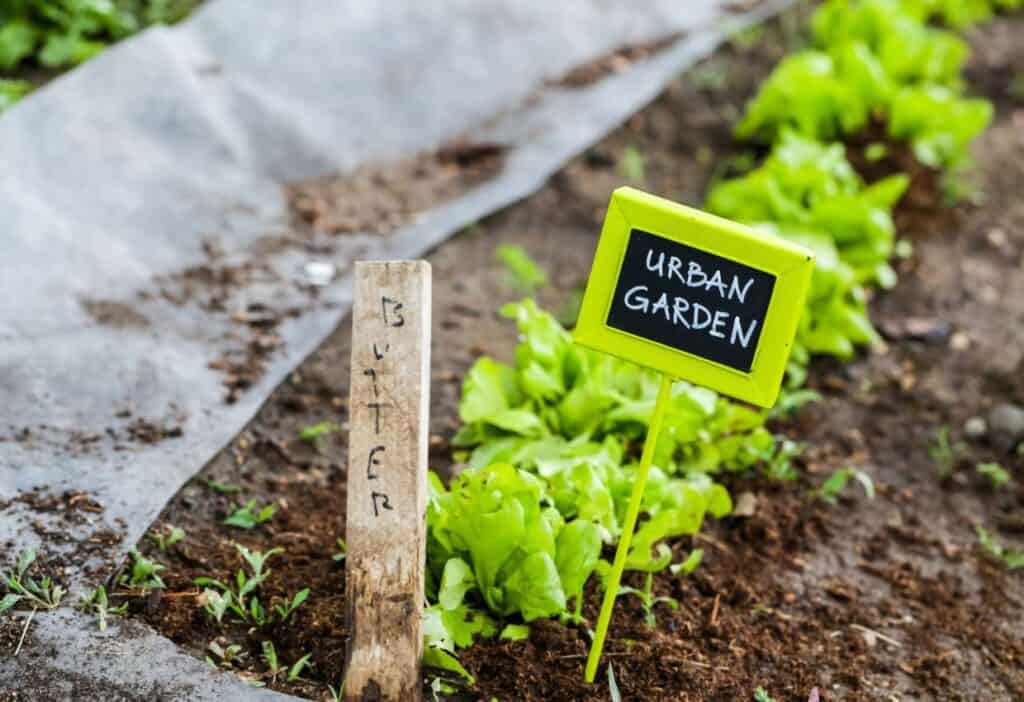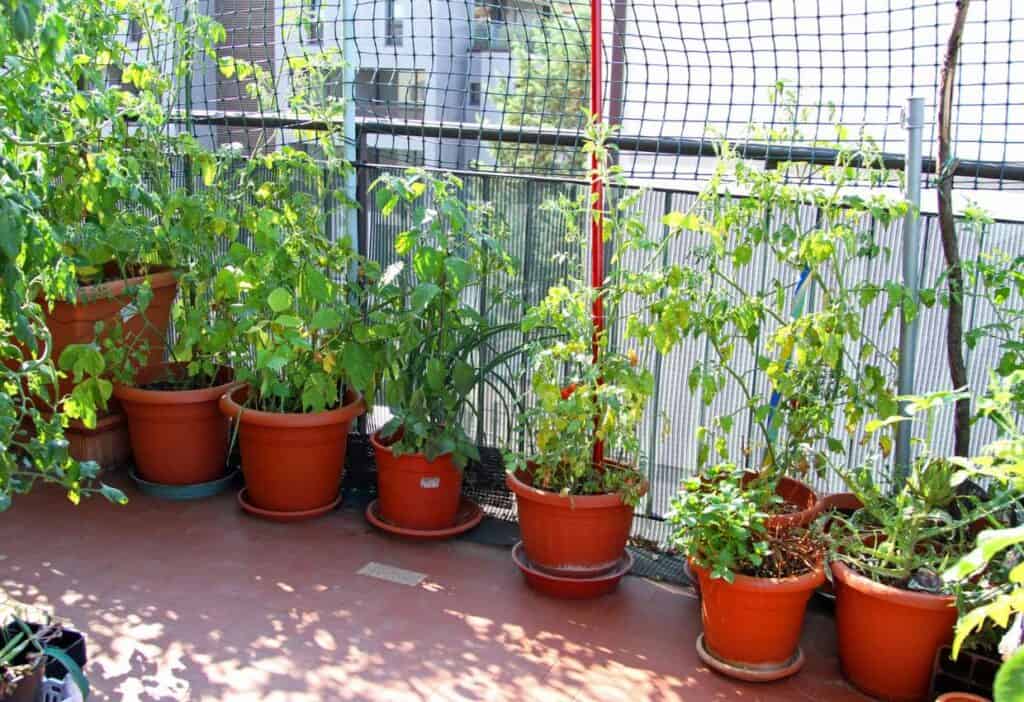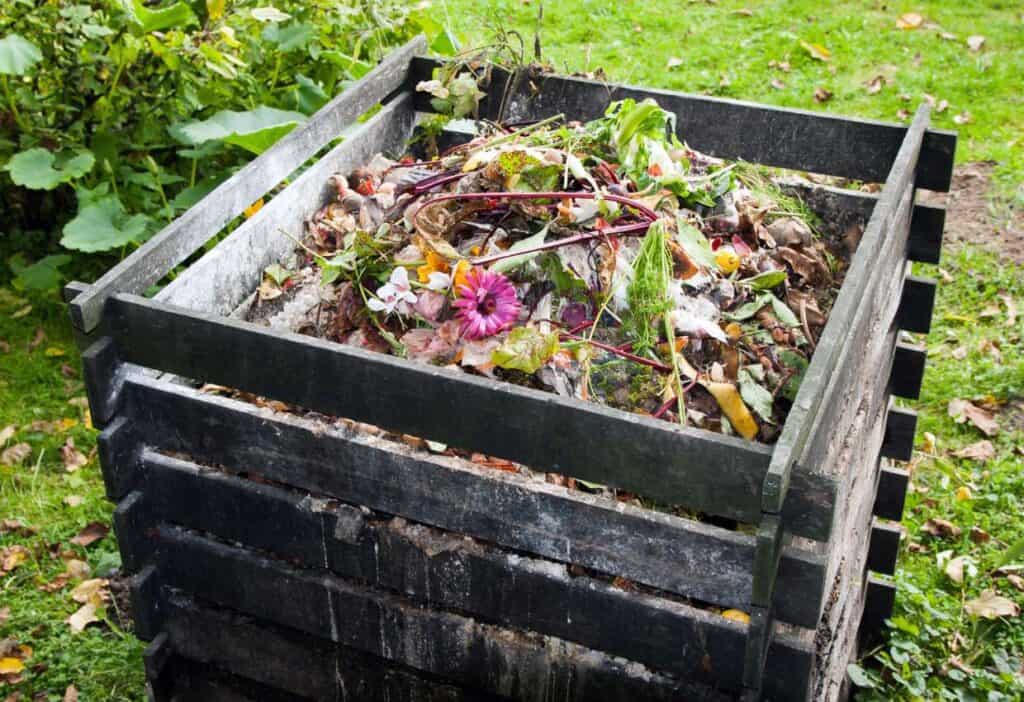Spring weather has you eager to start your garden, but your city home has a tiny backyard — or none at all. Instead of abandoning your dreams of fresh veggies and herbs, look for creative ways to grow the greens you love. Read on for seven urban gardening tips to help you grow your own food no matter where you live.

Understanding urban gardening
Gardening in the city or suburbs is a key step towards sustainability and self-reliance in the city. Even if your outdoor space is a small balcony or a shared patch of land, gardening may help to reduce your environmental impact and food expenses. Not to mention, it helps create an enjoyable outdoor living space.
This approach to gardening takes many forms, from vertical gardens that climb up walls to container gardens that fit on balconies. However, growing your urban garden requires creativity to overcome obstacles like cramped quarters and compromised soil conditions.
Urban gardening is a great way to turn dull concrete areas into peaceful green spaces by reintroducing nature. It creates pockets of biodiversity and helps city folks connect directly with their food sources.
Vertical gardening
Think of vertical gardening as the high-rise of horticulture. It’s a way to grow upwards, not outwards. This technique suits those living in the city who crave a touch of green but wrestle with the challenge of cramped spaces.
Vertical gardens save space and can turn a bland wall into a lush tapestry of greenery. At the same time, vertical gardeners might experience issues keeping plants hydrated and protected from wind and city birds like pigeons. You’ll need wall planters, hanging pots and sturdy shelves to take advantage of vertical spaces like walls or balconies.
“Going vertical has been a game changer for our tiny backyard garden. Raised beds placed strategically to capture the right sun, containers to snuggle into available space and using vertical growing spaces — trellis between two containers, growing towers — help us take advantage of every bit of small square footage we have.”
— Darcy Baldwin, The Purposeful Pantry
Growing microgreens
If you like the idea of growing vegetable greens that pack a punch regarding nutrition and flavor, try growing microgreens. These tiny plants thrive in tiny spaces and dim corners, perfect for city dwellers. Learn how to grow microgreens in jars or small pots inside your apartment.
You only need seeds, soil and a container to get started. Buy seeds online or at local gardening stores.
“Opting for small containers and buying sufficient supports has helped me with growing veggies even in smaller apartment patios. Plus, investing in a good-sized watering can is helpful so you don’t have to make too many trips back and forth to your smaller garden or patio garden.”
— Christine Csencsitz, Cats & Coffee
Cinder block gardening
Imagine transforming dull cinder blocks into a pretty garden in your city or suburban backyard. Cinder block gardening does just that, turning concrete blocks into the foundation of a raised bed garden.
Discover how to build a cinder block garden and fill these blocks with either purchased soil or rich compost. These gardens offer an ideal environment for flourishing flowers, herbs or vegetables. Plus, it’s incredibly cost-effective and durable against the elements.
Potager gardening
Imagine walking out the backdoor of your row house and into your garden to find a vibrant mix of veggies, herbs and blooms. This is the essence of potager gardening, which blends beauty with utility in compact spaces. And it’s ideal for city dwellers craving fresh produce from their tiny garden patch.
Starting a potager garden doesn’t need acres; even a small space can produce tomatoes, peppers, cucumbers and peppers to use in your kitchen. A good potager garden depends on smart design — integrating plants based on their growth patterns and needs to maximize yield within limited square footage.
Herb gardening

Urban gardens shine when you grow herbs. Herbs thrive in small spaces like pots and containers, bringing your balcony or patio to life with fresh scents. Add fresh herbs to salads, cook with them, dry them or freeze them to use in the winter.
Herb gardening only needs a little space. Even a modest sunny windowsill can support a productive herb garden. Every herb, from basil to thyme, brings its own distinctive taste that improves the flavor of meals in a way pre-packaged dried herbs simply cannot match. Buy a couple of pots, some heirloom seeds and potting soil, and you’re on your way.
Making compost

As experienced gardeners will tell you, compost turns kitchen scraps and yard waste into gold. It’s a simple way to enrich your city soil, perfect for small backyard gardens, container gardening and raised beds.
At its core, compost is decomposed organic matter. When you compost kitchen waste like fruit peels or coffee grounds, you create rich soil to feed your plants naturally.
This natural process reduces household waste and provides an excellent source of homemade plant food. You boost your urban garden’s health and yield with just a little effort.
Apply permaculture principles
Consider including permaculture principles when planning your urban garden. Permaculture is a sustainable living philosophy that balances human activities with the ecological processes of nature.
To add permaculture to an urban garden, study your space’s sun, wind and water flow patterns. This knowledge will guide where you place plants, water systems and seating areas for maximum growing success and enjoyment.
Consider companion planting and growing certain plants together for mutual benefit. For example, marigolds repel nematodes from tomatoes. Introduce native plants to attract local wildlife, like pollinators essential for fruit-bearing crops.
Catching and storing energy reduces reliance on external resources. Install rain barrels to collect runoff for watering your garden. Add landscape rocks in sunny areas to create warmer microclimates in your garden. Use reflective surfaces to increase sunlight exposure to plants needing more light.
Urban gardening is easy
Growing your food in the city might seem challenging, but it’s more doable than you think. Thinking creatively and mastering specific strategies can turn even the most compact, bleak urban patios and backyards into pretty green spaces. Urban gardening lets you enjoy fresh fruits, veggies and herbs, whether you have a tiny balcony or a windowsill.
Sarita Harbour is a homeschooling, homesteading mom and a long-time business and finance writer. She created An Off Grid Life to help people become more self-reliant. Sarita and her family live off the grid in Canada’s Northwest Territories.